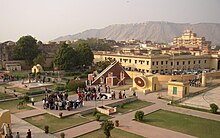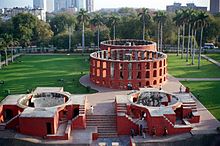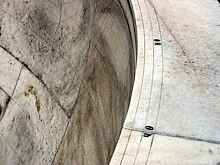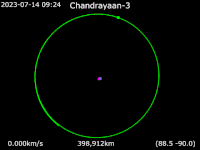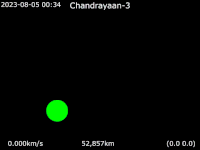
Aryabhata or Aryabhata I was the first of the major mathematician-astronomers from the classical age of Indian mathematics and Indian astronomy. His works include the Āryabhaṭīya and the Arya-siddhanta.
Brahmagupta was an Indian mathematician and astronomer. He is the author of two early works on mathematics and astronomy: the Brāhmasphuṭasiddhānta, a theoretical treatise, and the Khaṇḍakhādyaka, a more practical text.

Bhāskara, also known as Bhāskarāchārya, and as Bhāskara II to avoid confusion with the 7th century mathematician Bhāskara I, was an Indian mathematician, astronomer and inventor. From verses in his main work, Siddhāṁta Śiromaṇī (सिद्धांतशिरोमणी), it can be inferred that he was born in 1114 in Vijjadavida (Vijjalavida) and living in the Satpuda mountain ranges of Western Ghats, believed to be the town of Patana in Chalisgaon, located in present-day Khandesh region of Maharashtra by scholars. In a temple in Maharashtra, an inscription supposedly created by his grandson Changadeva, lists Bhaskaracharya's ancestral lineage for several generations before him as well as two generations after him. Colebrooke who was the first European to translate (1817) Bhaskaracharya II's mathematical classics refers to the family as Maharashtrian Brahmins residing on the banks of the Godavari.
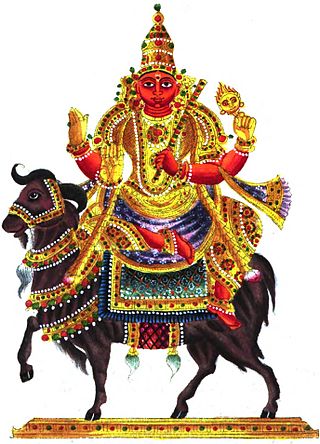
Mangala is the personification, as well as the name for the planet Mars, in Hindu literature. Also known as Lohita, he is the deity of anger, aggression, as well as war. According to Vaishnavism, he is the son of Bhumi, the earth goddess, and Vishnu, born when the latter raised her from the depths of the primordial waters in his Varaha avatar.
Bhāskara was a 7th-century Indian mathematician and astronomer who was the first to write numbers in the Hindu–Arabic decimal system with a circle for the zero, and who gave a unique and remarkable rational approximation of the sine function in his commentary on Aryabhata's work. This commentary, Āryabhaṭīyabhāṣya, written in 629 CE, is among the oldest known prose works in Sanskrit on mathematics and astronomy. He also wrote two astronomical works in the line of Aryabhata's school: the Mahābhāskarīya and the Laghubhāskarīya.
Vatasseri Parameshvara Nambudiri was a major Indian mathematician and astronomer of the Kerala school of astronomy and mathematics founded by Madhava of Sangamagrama. He was also an astrologer. Parameshvara was a proponent of observational astronomy in medieval India and he himself had made a series of eclipse observations to verify the accuracy of the computational methods then in use. Based on his eclipse observations, Parameshvara proposed several corrections to the astronomical parameters which had been in use since the times of Aryabhata. The computational scheme based on the revised set of parameters has come to be known as the Drgganita or Drig system. Parameshvara was also a prolific writer on matters relating to astronomy. At least 25 manuscripts have been identified as being authored by Parameshvara.
Lalla was an Indian mathematician, astronomer, and astrologer who belonged to a family of astronomers. Lalla was the son of Trivikrama Bhatta and the grandson of Śâmba. He lived in central India, possibly in the Lāṭa region in modern south Gujarat. Lalla was known as being one of the leading Indian astronomers of the eighth century. Only two of his works are currently thought to be extant.
Indian mathematics emerged in the Indian subcontinent from 1200 BCE until the end of the 18th century. In the classical period of Indian mathematics, important contributions were made by scholars like Aryabhata, Brahmagupta, Bhaskara II, and Varāhamihira. The decimal number system in use today was first recorded in Indian mathematics. Indian mathematicians made early contributions to the study of the concept of zero as a number, negative numbers, arithmetic, and algebra. In addition, trigonometry was further advanced in India, and, in particular, the modern definitions of sine and cosine were developed there. These mathematical concepts were transmitted to the Middle East, China, and Europe and led to further developments that now form the foundations of many areas of mathematics.
Utpala, also known as Bhaṭṭotpala was an astronomer from Kashmir region of present-day India, who lived in the 10th century. He wrote several Sanskrit-language texts on astrology and astronomy, the best-known being his commentaries on the works of the 6th-century astrologer-astronomer Varāhamihira.

The Surya Siddhanta is a Sanskrit treatise in Indian astronomy dated to 4th to 5th century, in fourteen chapters. The Surya Siddhanta describes rules to calculate the motions of various planets and the moon relative to various constellations, diameters of various planets, and calculates the orbits of various astronomical bodies. The text is known from a 15th-century CE palm-leaf manuscript, and several newer manuscripts. It was composed or revised probably c. 800 CE from an earlier text also called the Surya Siddhanta. The Surya Siddhanta text is composed of verses made up of two lines, each broken into two halves, or pãds, of eight syllables each.

Aryabhatiya or Aryabhatiyam, a Sanskrit astronomical treatise, is the magnum opus and only known surviving work of the 5th century Indian mathematician Aryabhata. Philosopher of astronomy Roger Billard estimates that the book was composed around 510 CE based on historical references it mentions.
Khagaul is a city and a municipality in Patna district in the Indian state of Bihar. It is a part of the Danapur-cum-Khagaul block of Patna.
A jyotiḥśāstra is a text from a classical body of literature on the topic of Hindu astrology, known as Jyotiṣa, dating to the medieval period of Classical Sanskrit literature. Only the most important ones exist in scholarly editions or translations, while many remain unedited in Sanskrit or vernacular manuscripts.

Budha is the Sanskrit word for the planet Mercury. Budha is also a god of Planet Mercury.
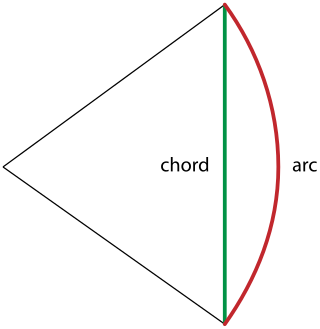
Āryabhata's sine table is a set of twenty-four numbers given in the astronomical treatise Āryabhatiya composed by the fifth century Indian mathematician and astronomer Āryabhata, for the computation of the half-chords of a certain set of arcs of a circle. The set of numbers appears in verse 12 in Chapter 1 Dasagitika of Aryabhatiya. It is not a table in the modern sense of a mathematical table; that is, it is not a set of numbers arranged into rows and columns. Āryabhaṭa's table is also not a set of values of the trigonometric sine function in a conventional sense; it is a table of the first differences of the values of trigonometric sines expressed in arcminutes, and because of this the table is also referred to as Āryabhaṭa's table of sine-differences.
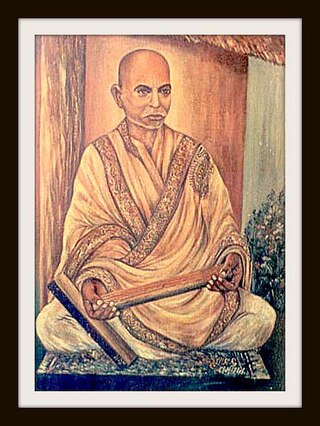
Pathani Samanta better known as Mahamahopadhyaya Chandrasekhara Singha Harichandana Mahapatra Samanta, was an Indian astronomer, mathematician and scholar who measured the distance from the Earth to the Sun with a bamboo pipe, and traditional instruments. He was born on 13 December 1835 in Purnimanta Pousha Krishna Ashtami, and died on 11 June 1904 in Purnimanta Adhika Jyeshtha Krishna Trayodashi.
Mañjula, also known as Muñjāla, was an Indian astronomer, whose only surviving work is Laghu-mānasa, an ephemeris and calculation text in Sanskrit language. He may have also authored another text, the Bṛhan-mānasa, but this is not certain.
Pancha-siddhantika is a 6th-century CE Sanskrit-language text written by astrologer-astronomer Varāhamihira in present-day Ujjain, India. It summarizes the contents of the treatises of the five contemporary schools of astronomy (siddhantas) prevalent in India.
Suryadeva was a Sanskrit-language writer on astrology and astronomy (jyotisha)) from the Chola kingdom of southern India. He wrote commentaries on several notable works including the Aryabhatiya and the Laghu-manasa.





